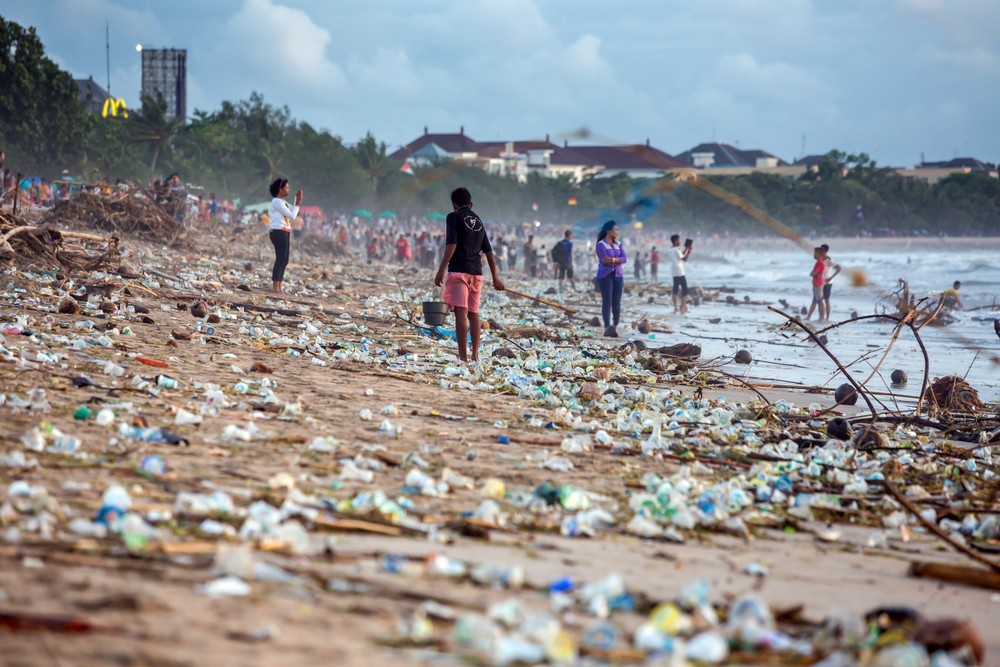Americans Rank First in Plastic Waste Contribution
Posted on Categories Discover Magazine

The average person in the U.S. uses an enormous amount of plastic — much more so than in other countries. And this number has surged in recent decades.
Back in 1980, annual plastic use in the U.S. was around 60 pounds per person. By 2018, this figure had risen to 218 pounds. A paper from 2020 estimated that 46 million tons of plastic waste was created in the U.S. in 2016.
“We estimated that in the U.S., our population produces more plastic waste than in any other country on the planet. That’s in total, but also per capita,” says Kara Lavender Law, a research professor with the Sea Education Association and first author on that study.
Plastic Waste Contributors
Troublingly, the recorded figures probably don’t even reflect the reality of the total sum of plastic waste, say experts like Lisa Erdle, director of research and innovation at 5 Gyres.
That’s because there are lots of categories of hidden waste that go unmeasured.
“We use and throw out a lot of single-use packaging, like food-ware. That’s what many of us are aware of,” she says. “But textiles are actually the second most discarded type of plastic after single-use packaging.”
Sources of Plastic Pollution
Washing clothes, for example, can release thousands of tiny microplastics, depending on the type of material.
“Sometimes these small microplastics aren’t included in those types of calculations of how much plastic people are disposing or those that are getting into the environment from our everyday use,” Erdle says. “There are a lot of factors that can influence how much plastic we are emitting into the environment or putting to landfill.”
In addition, there are a lot of other less visible sources of plastic pollution – such as those connected to construction, wear from car tires and other materials — that often escape calculations.
Lavender Law agrees that it’s complicated to arrive at firm estimates on total waste. Her team’s findings were based on municipal waste alone, which is complicated to calculate in its own right.
Plastic Waste Problem Surges
Despite these challenges, she also states that the problem is only likely to grow based on projections.
More than 400 million tons of plastic are produced annually at the global scale.
And one projection by the Organisation for Economic Co-operation and Development shows this figure could triple by 2060.
Plastic Pollution in the Oceans
Beyond calculating plastic waste figures per capita — which of course depends on each person and unique household habits — researchers are also getting a handle on what this waste means for people and the environment.
A study published earlier this year, for example, showed that plastic pollution caused a specific illness, dubbed ‘plasticosis’ in a seabird.
Recently, Erdle’s organization released a report detailing the extent of this pollution in the world’s oceans. Erdle’s team estimate that 170 trillion plastic particles are floating in waters from the Arctic to Antarctica, and everywhere in between. That mass amounts to around 2 million tons, according to the research.
It’s already known this pollution is impacting marine life.
How to Reduce Plastic Waste
Additional research shows that in the U.S., litter plaguing national parks from the East to West coast is predominantly made up of plastics. Cigarette butts, food wrappers, and plastic bottles were among some of the most common items.
Experts say that solutions are required at the local, national and international level to stem the tide of this plastic pollution. In the US, says Erdle, this could start with cities.
“I think city-wide inventories are needed to understand the types of plastics being released,” she says. “Each city is going to be different, but if we do the work, where we look at individual locations, we can understand what kind of microplastics are in the environment and then find these tailored and most effective solutions.”